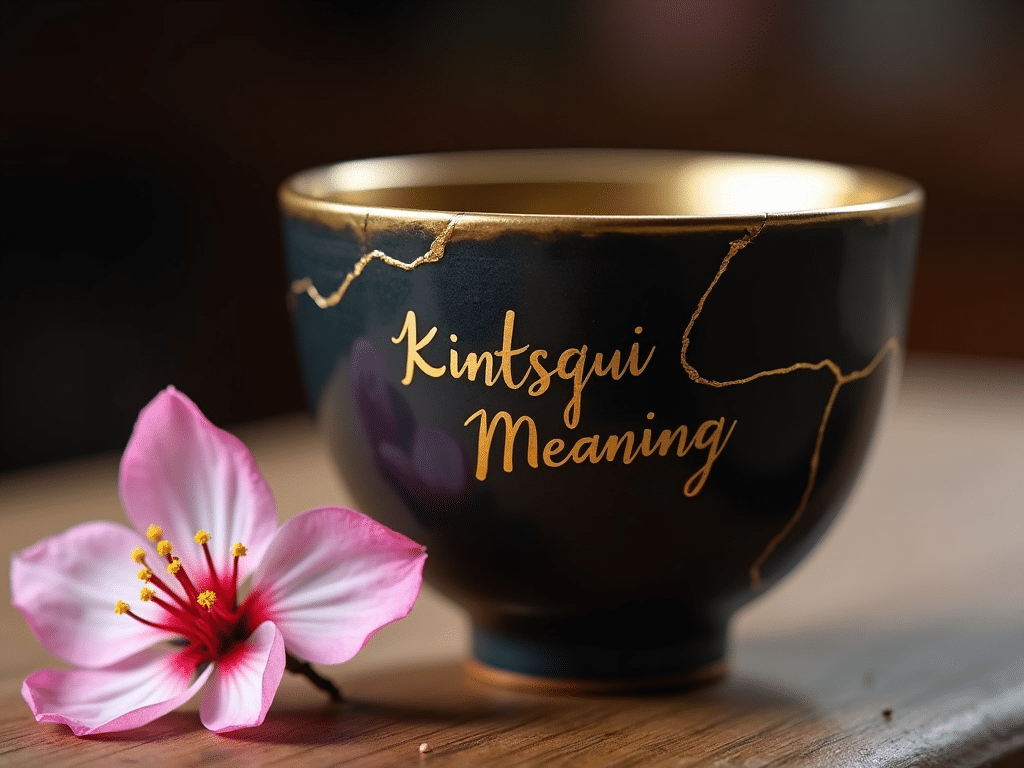Kintsugi, the Japanese art of repairing broken pottery with lacquer dusted or mixed with powdered gold, silver, or platinum, is more than just a method of restoration. It’s a philosophy that embraces flaws and imperfections, transforming them into something beautiful and unique. This ancient practice teaches us to see the beauty in brokenness and to appreciate the history and story behind each piece.
| Key Takeaways | Description |
|---|---|
| Meaning | Kintsugi means “golden joinery” in Japanese. |
| Philosophy | Embraces imperfections and values the beauty of scars. |
| Process | Uses lacquer mixed with precious metals to repair pottery. |
| Symbolism | Represents resilience and personal growth. |
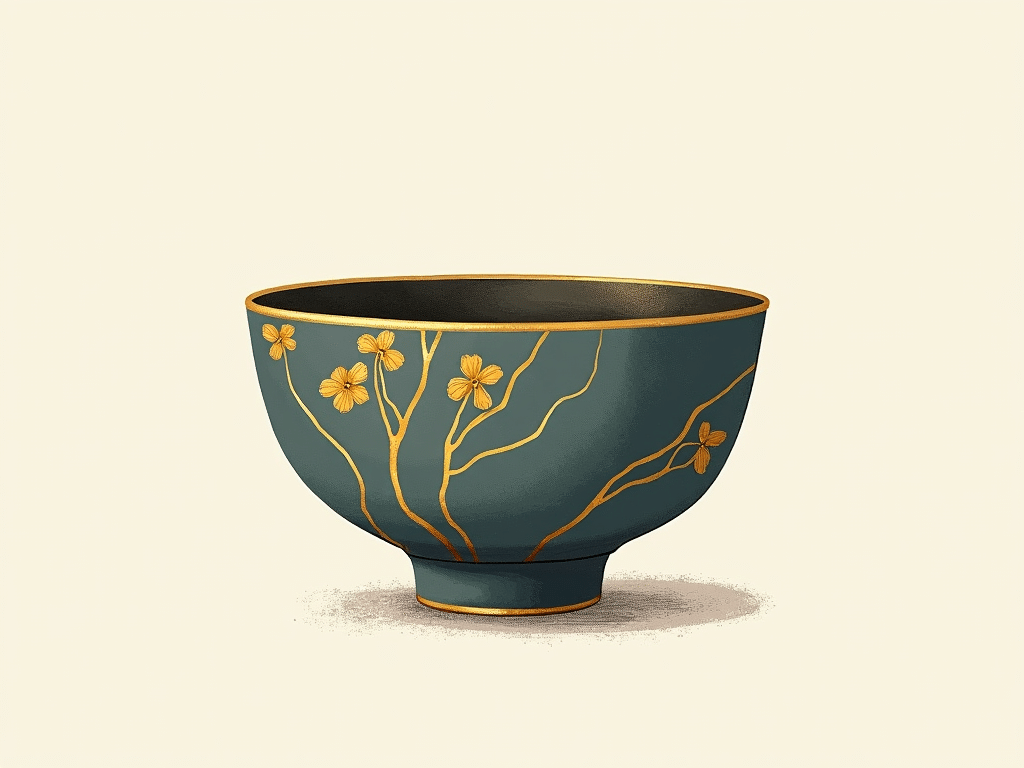
Historical Background
Kintsugi dates back to the late 15th century and is often associated with the Japanese shogun Ashikaga Yoshimasa, who sent a damaged tea bowl back to China for repairs. The bowl returned with unsightly metal staples, prompting Japanese artisans to find a more aesthetically pleasing solution. Thus, kintsugi was born—a method that not only repaired but enhanced the beauty of broken ceramics.
This technique evolved from a practical repair method into an art form celebrated for its aesthetics and philosophy. Over time, it became deeply intertwined with wabi-sabi, a Japanese worldview centered on accepting transience and imperfection.
Philosophical Underpinnings
At its core, kintsugi is about embracing flaws and finding beauty in imperfection. This aligns closely with wabi-sabi, which values simplicity, impermanence, and the natural world. Kintsugi teaches us that scars and cracks are not something to hide but to highlight, as they add character and history to an object.
Imagine your favorite mug breaks. Instead of tossing it away, you repair it using kintsugi. Each golden seam tells a story of resilience—just like how life’s challenges shape who we are. It’s like when you learn from a mistake or grow from a tough experience; those “cracks” make you stronger and more interesting.
The Art of Kintsugi
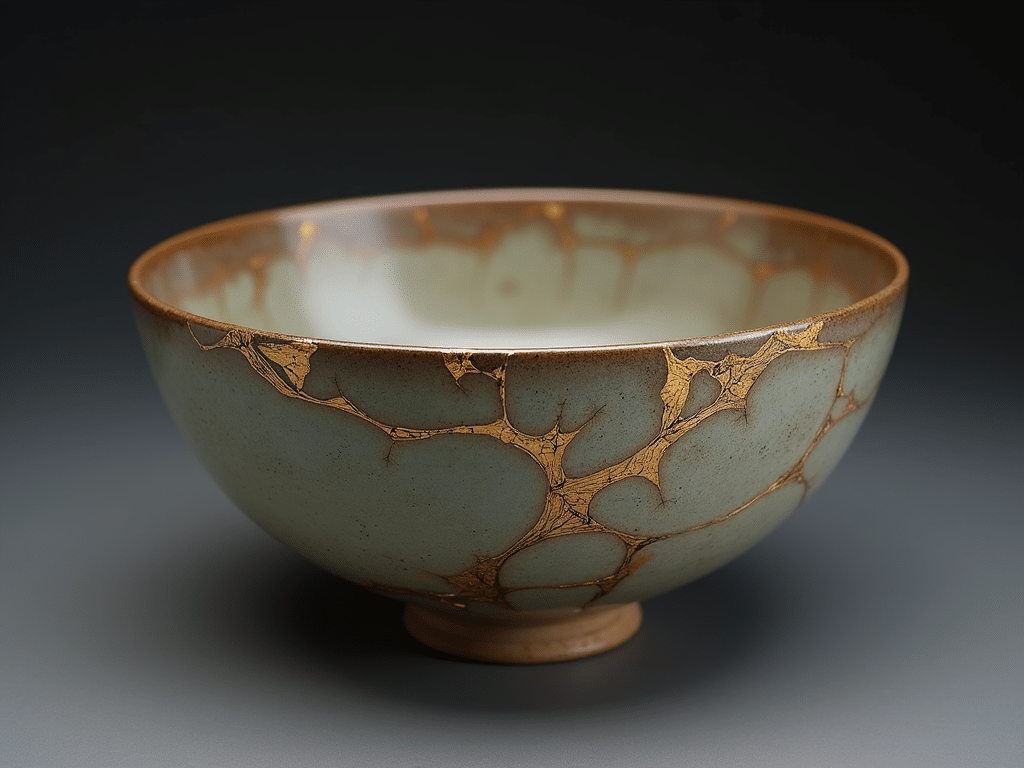
The kintsugi process is meticulous and time-consuming, often taking months to complete. Here’s how it works:
- Preparation: The broken pieces are carefully cleaned.
- Adhesion: Lacquer is applied to bond the pieces together.
- Decoration: The seams are dusted or mixed with powdered gold, silver, or platinum.
- Curing: The piece is left to cure for several weeks.
This process not only restores the item but transforms it into something new—highlighting its unique history rather than hiding it.
Symbolism and Metaphor
Kintsugi serves as a powerful metaphor for personal growth and resilience. It teaches us to accept life’s imperfections and view challenges as opportunities for transformation. Just like bookends frame the start and end of a story, kintsugi frames our experiences, showing us that every crack can lead to new beginnings.
In our lives, embracing kintsugi means acknowledging our flaws and learning from them. It’s about seeing setbacks not as failures but as chances to grow stronger—much like how solfege helps musicians find their pitch through practice and persistence.
Cultural Impact and Modern Applications
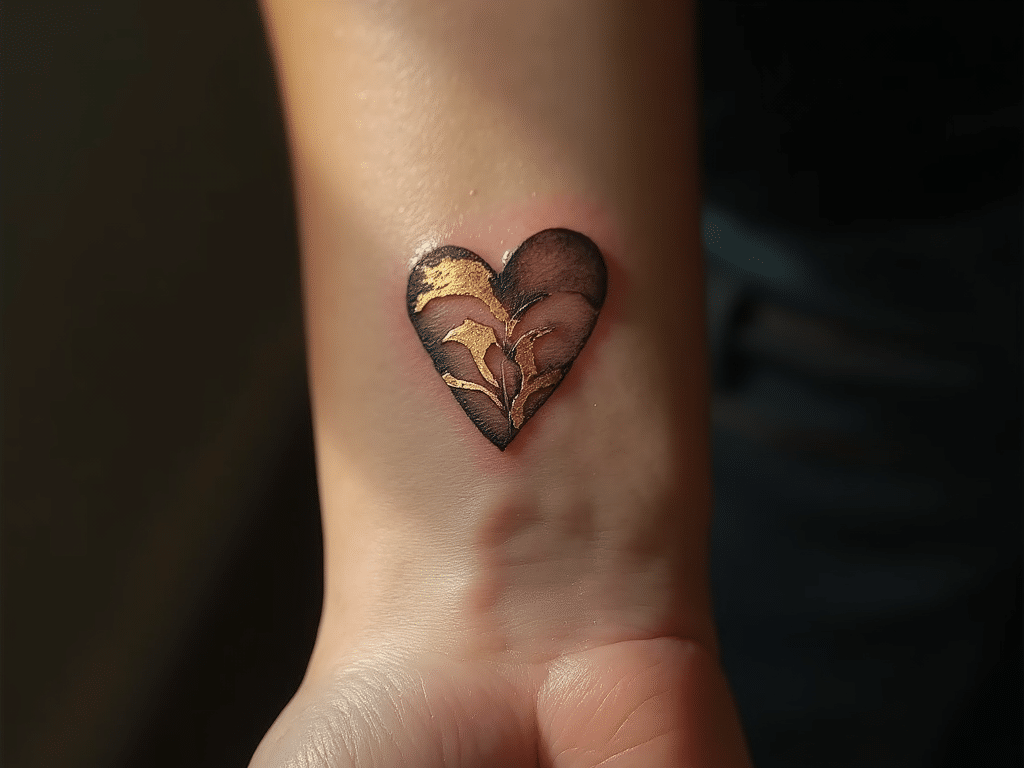
Kintsugi has transcended its origins, influencing contemporary art and design. Artists and designers worldwide use kintsugi techniques to explore themes of loss, recovery, and transformation. This art form encourages us to rethink how we perceive damage—not as a flaw but as an integral part of an object’s journey.
In personal development, kintsugi inspires individuals to embrace their imperfections. It’s like the concept of resilience, where bouncing back from setbacks is celebrated. By applying kintsugi principles, people learn to appreciate their unique stories and grow from their experiences.
Practical Lessons from Kintsugi
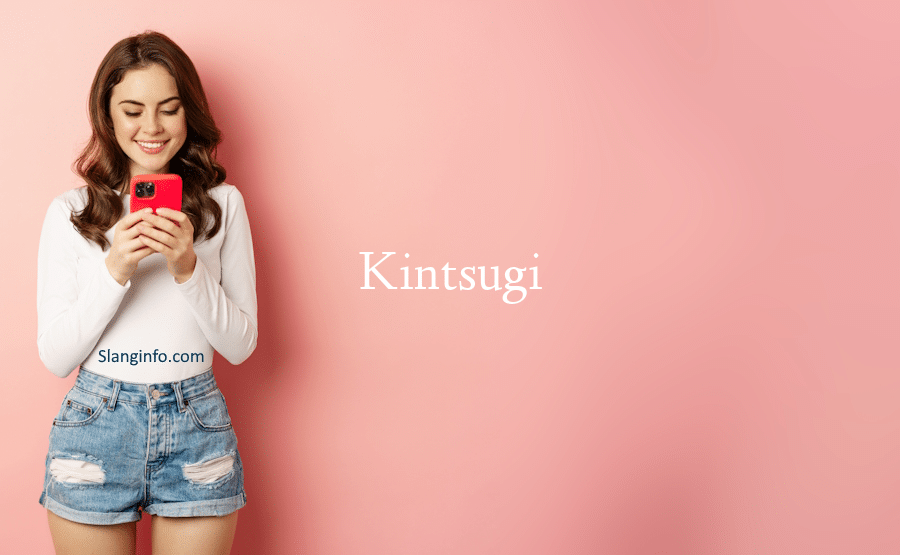
Kintsugi offers valuable insights that can be applied to everyday life:
- Embrace Imperfections: Accept that flaws are part of who you are. They add depth and character.
- Learn from Mistakes: Use setbacks as opportunities for growth. Each mistake is a stepping stone to resilience.
- Cultivate Resilience: Like the repaired pottery, become stronger through life’s challenges.
Tips for Applying Kintsugi Principles
- Be Honest About Vulnerabilities: Acknowledge your weaknesses and view them as areas for growth.
- Celebrate Your Journey: Just like each repaired piece tells a story, your experiences shape who you are.
- Adapt and Thrive: Embrace change and use it to become more resilient.
Conclusion
Kintsugi offers a refreshing perspective on beauty and imperfection. By highlighting the beauty in brokenness, it encourages us to accept ourselves fully—flaws and all. Whether you’re dealing with personal challenges or simply looking for a new way to view the world, kintsugi’s lessons can inspire self-acceptance and resilience.
Remember, just like a piece of pottery transformed by kintsugi, you too can turn life’s cracks into golden seams of strength and beauty. Embrace your unique journey, and let your story shine!

